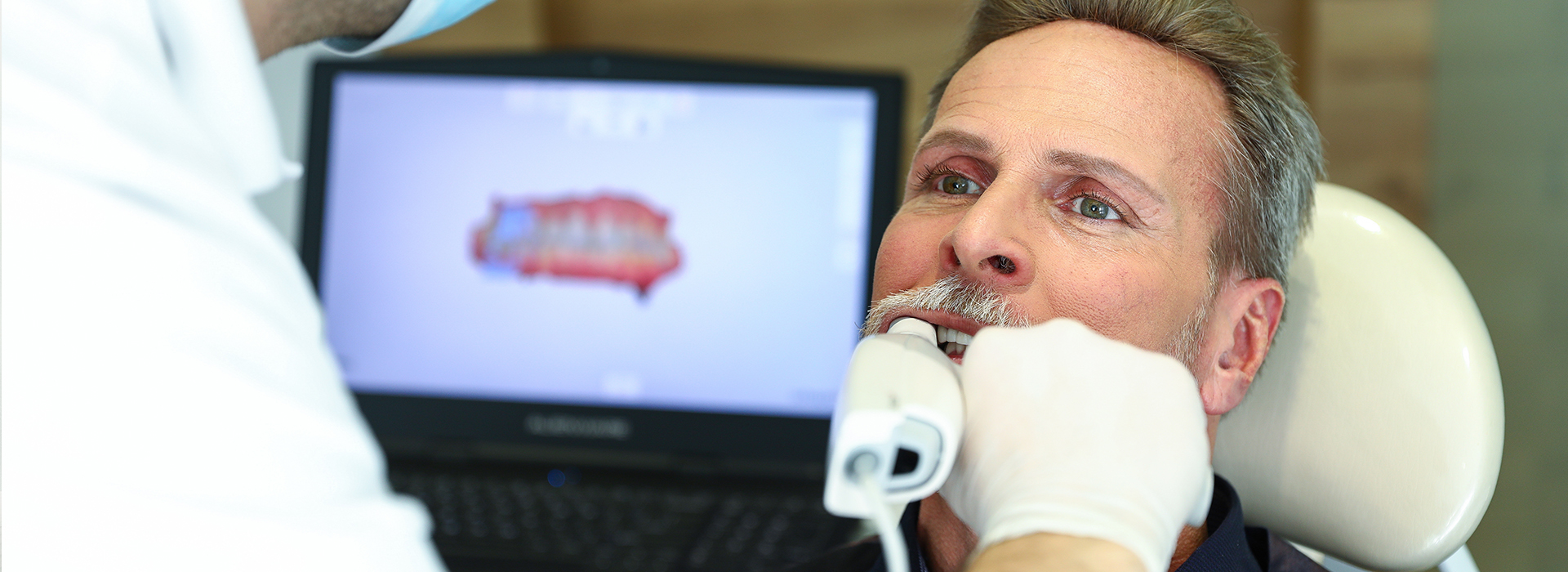Hablamos español!
Hablamos español!

Digital impressions capture the shape of teeth and surrounding tissues using a handheld intraoral scanner that records thousands of data points in three dimensions. Instead of relying on traditional impression materials that can be messy and uncomfortable, the scanner maps surfaces with optical or laser-based technology to create an accurate computer model. That 3D model becomes the foundation for crowns, bridges, implants, and other restorations that require exact fits.
Because the output is digital, every scan can be reviewed immediately on-screen. Clinicians can rotate, zoom, and measure the model to verify margins, contacts, and occlusion before any work leaves the office. This immediate feedback reduces guesswork during treatment planning and helps dentists make informed decisions quickly.
Digital impression systems have evolved rapidly and now support a wide range of restorative workflows. The final digital file is compatible with most dental laboratories and many in-office CAD/CAM systems, making it a flexible tool for restorative, orthodontic, and surgical planning.
Patients often describe the scanning process as noticeably less invasive than traditional impressions. The clinician simply moves a small wand around the teeth while the scanner assembles the surface data into a live 3D model. There’s no impression tray pressing on the gag reflex, no setting time, and no unpleasant impression material taste or residue.
Scans typically take only a few minutes for a single arch and slightly longer for full-arch captures, depending on the complexity of the case. Because the image appears in real time, the dental team can address any missing detail immediately, avoiding the need for retakes later.
For patients with special needs, children, or anyone with a strong gag reflex, digital scanning can make diagnostic and restorative appointments more comfortable and less stressful. The streamlined experience also often shortens appointment time and reduces the number of visits required for certain procedures.
One of the most important clinical benefits of digital impressions is improved accuracy. High-resolution scanners produce detailed models that capture margins and neighboring tooth anatomy precisely, which contributes to restorations that seat more predictably. Better initial fit means fewer adjustments at try-in and a higher likelihood of long-term success.
Digital files enable clinicians to assess occlusion and contact points in a virtual environment, helping to identify and correct potential interferences before the restoration is fabricated. This preemptive approach reduces chairside time and can prevent post-placement complications related to poor occlusal contacts.
Because digital data can be archived and compared over time, it supports continuity of care. If a restoration needs evaluation months or years later, the original digital impression can be reviewed to understand how the restoration related to the original anatomy and to assist in planning any necessary follow-up treatments.
In complex cases—such as implant restorations or full-mouth rehabilitations—digital impressions integrate with other digital records like CBCT scans and intraoral photographs, allowing for more accurate guided workflows and coordinated treatment planning among specialists.
Digital impressions eliminate the physical step of shipping stone or alginate impressions to a dental laboratory. Instead, files are securely transmitted electronically, which streamlines communication and shortens turnaround times. Laboratories can import the digital model directly into their CAD software, plan restorations, and produce milled or printed prosthetics with reduced manual steps.
For offices equipped with chairside CAD/CAM systems, a digital impression can feed immediately into the design phase. That connection is what enables same-day ceramic restorations: the scan goes from capture to design to milling or 3D printing — all within a single visit when clinically appropriate. This integrated workflow benefits patients who need quick restoration without multiple appointments.
Even when a laboratory produces the final restoration, the enhanced clarity of a digital impression helps technicians understand margin lines and occlusal relationships more precisely, which contributes to consistent, predictable results. Digital communication also allows clinicians and lab technicians to exchange annotated files and feedback faster than traditional phone or shipping methods.
Because the data is digital, it can be stored indefinitely and shared with specialists or emergency clinics if required, ensuring continuity and easy transfer of records without the risk of physical impressions being lost or damaged in transit.
At Everything Smiles, we prioritize technologies that improve comfort, accuracy, and efficiency for our patients. Digital impressions reduce the discomfort associated with conventional trays, provide immediate visual confirmation of treatment needs, and speed up the overall restorative process. Patients frequently appreciate seeing a clear, three-dimensional view of their own dentition during consultations.
Digital workflows also support personalized treatment planning. By combining digital impressions with intraoral photography and radiographic data, the dental team can present clearer options and show how a proposed restoration or appliance will interact with surrounding teeth. This makes informed decision-making more straightforward for patients and families.
For many procedures, the precision afforded by digital impressions translates into fewer appointments for adjustments and a higher chance that the restoration will require minimal modification at insertion. That means less time in the chair for patients and a smoother clinical experience from start to finish.
Summary
Digital impressions are a reliable, patient-friendly alternative to conventional dental molds. They improve clinical precision, streamline laboratory collaboration, and enable modern workflows such as same-day restorations. If you’d like to learn more about how digital scanning is used in our office or whether it’s appropriate for your dental needs, please contact us for more information.
